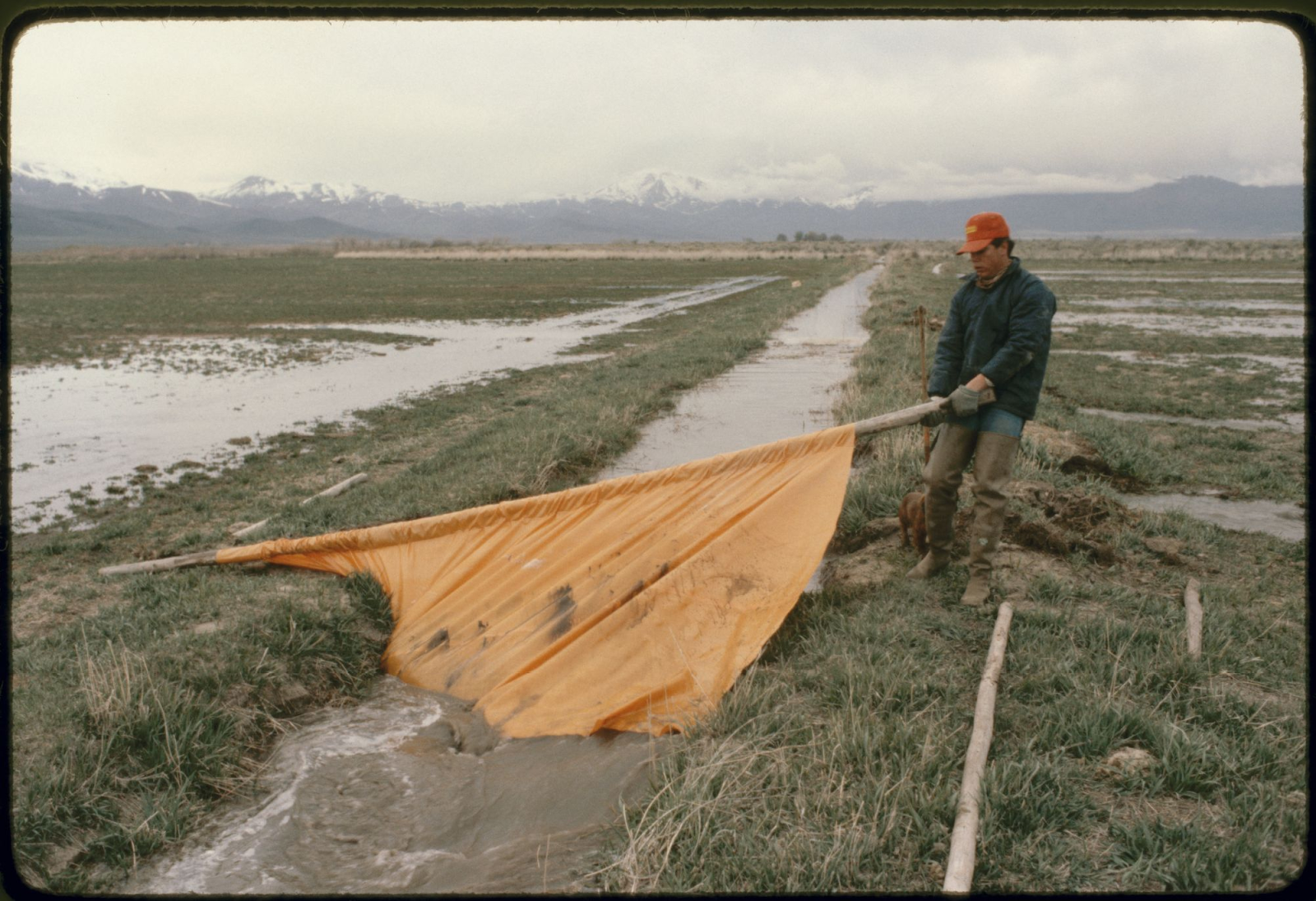To The End Of The Row
Sometimes I slept at Grandpa and Grandma Brown’s house. Sometimes it was just for fun or when my parents were out late. But sometimes, it was for a different reason. It was so I could go with grandpa on a night adventure. I wasn’t very old, maybe ten or eleven. Grandpa woke me a little after midnight and said it was time. I hurried and got dressed. Grandpa was already dressed. He put his miner’s lamp on his fedora and slipped the battery into the large front pocket on his striped overalls. We grabbed our boots, threw them into the old Plymouth and we were off to take the water. Often, Grandpa and I had to stay up late or get up in the middle of the night to irrigate. That night we watered the alfalfa, barley, corn, potatoes, and squash. Some of the crops were grown in rows with furrows that provided a path for the water to flow. However, crops such as alfalfa and barley were watered by flooding the entire area. The water was spread out over those types of crops by diverting it from the main ditch with a canvas dam. Having a full moon was a bonus when irrigating at night because the moonlight would shimmer on the water making it easier to tell where it was, and more importantly, where it wasn’t. Watering in the daytime was preferable to watering at night, even with a full moon. Irrigating at night required much more walking to determine if the water had reached everywhere it was supposed to go. We used a miner’s lamp fixed to our hats to do that in the dark. One of the most important lessons I learned while irrigating was that the water needed to reach each individual plant. If it didn’t, the plant would die. Making sure the water reached each and every plant was the most important thing we did when irrigating. That goal required more than just irrigating when the water was available. The irrigation water we used flowed in open ditches. It required a great deal of work to dig and keep those ditches clean. Concrete headgates, used at major intersections to make redirecting the flow of water easier, needed regular upkeep. Sometimes, when irrigating during the day, we had other chores to attend to during our water turn and we would have to leave the water running on its own for a while. Most of the time this was no problem but occasionally we would return to find a dam had broken or water had found its own path rather than the one we intended. It was always best to be present when watering but not always possible. Ideally, irrigating required our constant attention in order to make sure the water, necessary for life, reached each individual plant. Getting the water to where it needed to be required a great deal of planning, implementation, and follow up. Once, when my children were little, I had a daughter who wanted to help me in the garden. I thought an appropriate task for her would be to weed a row of carrots. I felt she was old enough to know the difference between carrots and weeds. I took what I considered to be ample time to explain the difference between the two types of plants. But then I left and didn’t watch her before leaving to work on something else. A little while later she came to get me, her face beaming with pride, to explain that she had completed the job and wanted me to come see. When I went to inspect her work, I was mortified to see that she had removed every carrot and left every weed. She understood the difference between the two but had misunderstood the significance of each. Had I made that clear, her work would not have been tainted by poor results. Her effort and desire were exemplary, especially for a child her age. The error wasn’t hers, it was mine. I didn’t explain so she couldn’t misunderstand and I failed to monitor her work long enough to make certain her understanding was sufficient. So while our intent had been good, the water didn’t get to the end of that allegorical row. Consequently, we didn’t eat any carrots from the garden that year.

